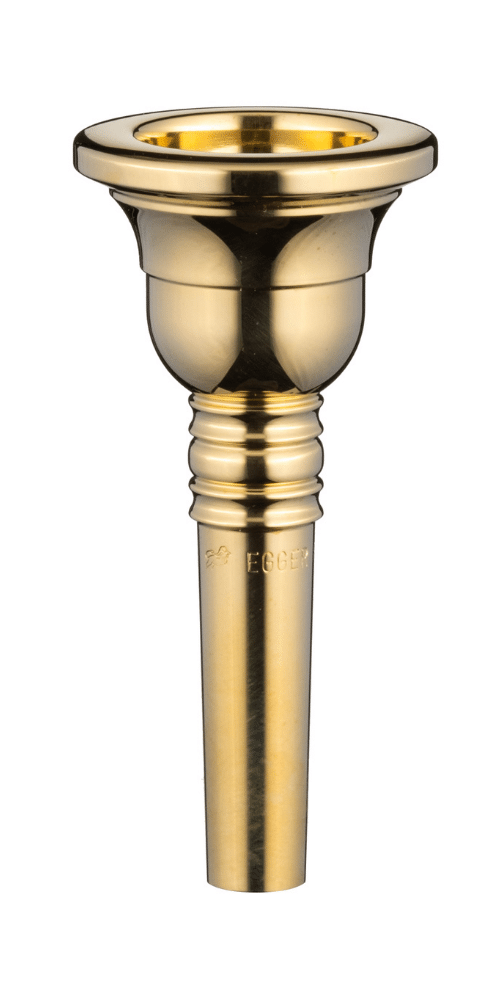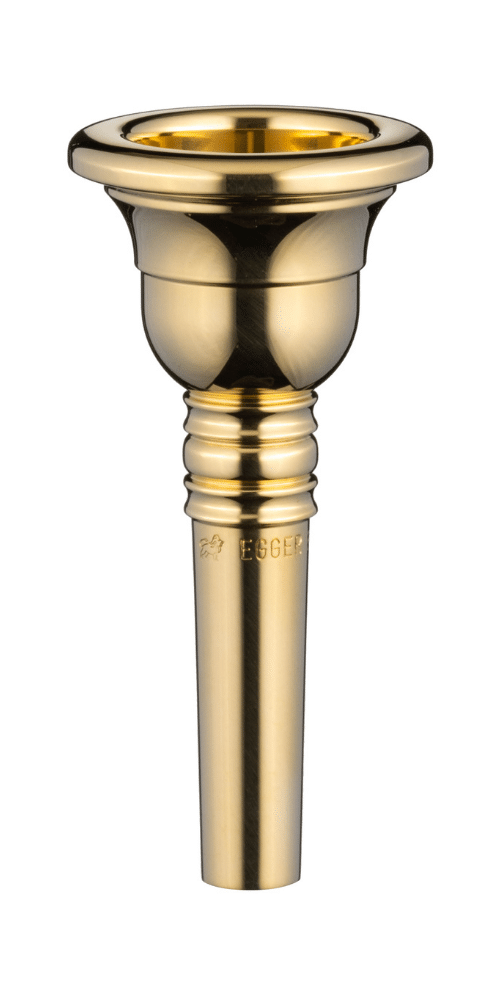Historical trombone mouthpieces
Our historical trombone mouthpieces range from the Renaissance to the Baroque and Classical period. Throughout all epochs, we offer alto, tenor and bass trombone mouthpieces as series with different cup diameters and partly different (historical and modern) rim shapes.
With all the trombone mouthpieces the goal is to correspond to the characters respectively the tonal, physical and optical properties of the authentic originals in the museums, but nevertheless to meet the high demands of our time.
Renaissance Trombone mouthpieces
Our Renaissance mouthpieces are available for alto, tenor and bass sackbut. They have a flat rim and a deep, slightly v-shaped cup, characteristic of the time. We offer different rim diameters, of which the smaller ones were more common in the Renaissance.
The sound tendency of these mouthpieces is round and soft.. They therefore mix very well, for example in the Colla Parte. Due to a change at the entrance to the bore our “V” mouthpieces work more smoothly, produce less “noise” and the lower register responds more easily. Taken wholly, the sound is more present and slightly less historical.
The mouthpieces are turned from brass. Only the mouthpiece after Schnitzer (SOT-7) is three-part, cup and sleeve are turned, the shank is made of sheet metal according to the historical original.
Baroque Trombone mouthpieces
Our Baroque mouthpieces are available for alto, tenor and bass trombone. They have a flat rimm and a sharp-edged entrance to the bore. In addition, some mouthpieces are also available with rounded rims.
They are brighter and more concise in sound than their Renaissance counterparts. Here, too, a range of different diameters is available. Of these, the smaller ones were more common in the Baroque period.
All mouthpieces are turned from brass.
Classic
trombone mouthpieces
Our classic mouthpieces are available for alto, tenor and bass trombone. According to the historical originals, they are equipped with a rounded rim and a rounded entrance to the bore.
Compared to the Renaissance and Baroque mouthpieces their sound is bigger and more voluminous.. At the same time, their sound is also smoother. The mixing behavior in both the section and the orchestra is excellent and is ideal for the use in classical symphonies.
Especially with the classical mouthpieces we regularly make customer-specific adjustments (e.g. screw rims or adapted shanks) to enable easy and fast switches to the modern instruments.





